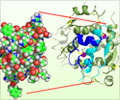People who have higher blood glucose levels and poorer control of those levels are more likely to develop eye-related complications 10 years later, according to a study.

Over the preceding nine years, their fasting plasma glucose levels and hemoglobin A1C (HbA1c, a measure of blood glucose control over time) had been tracked. In that time, 235 had diabetes (defined as being treated for the disease or having a glucose level of 126 milligrams per deciliter or higher at least once), 227 had an impaired fasting plasma glucose level (110 to 125 milligrams per deciliter) and 238 always had glucose levels within normal limits (less than 110 milligrams per deciliter).
Of the participants, 44 were classified as having retinopathy, including 19 with diabetes, 19 with impaired fasting glucose levels and six with normal glucose levels. Compared with those without retinopathy, those with the condition had higher average levels of fasting plasma glucose 10 years prior (130 vs. 106 milligrams per deciliter) and higher HbA1c (6.4 percent vs. 5.7 percent).
"Levels of HbA1c and fasting plasma glucose at baseline were related to the presence of retinopathy 10 years later, and the levels at which the positive predictive values increased provide a rationale for the choice of thresholds for the definition of hyperglycemia associated with 10-year retinopathy," the authors wrote.
The study has been published in the Archives of Ophthalmology.
Source-ANI
 MEDINDIA
MEDINDIA



 Email
Email










